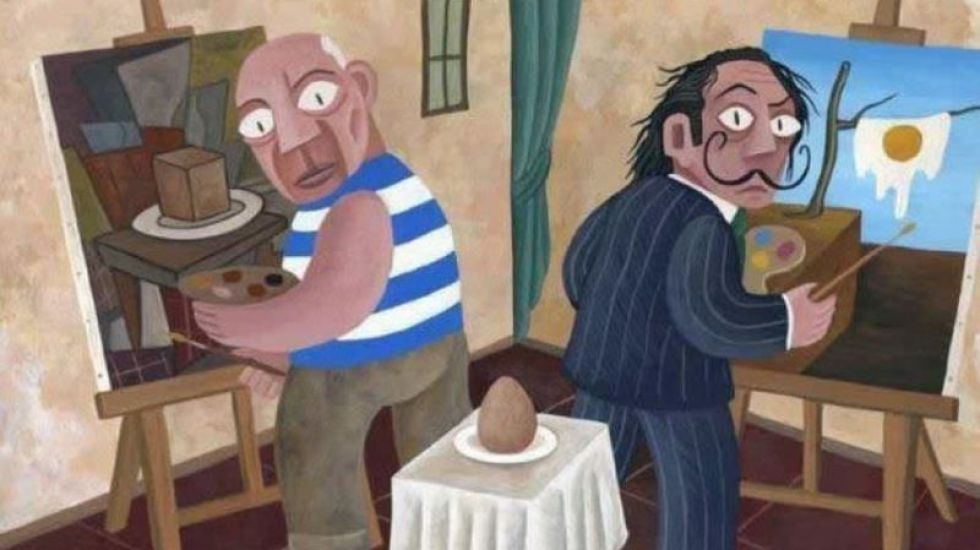"It has become a commonplace to say that Pablo Picasso dominated the art world in the twentieth century," observed Times magazine art critic Robert Hughes. The tiny Spaniard from Malaga became the prototype of the modern artist as a public figure before his 50th birthday. No other painter had such a large audience throughout his lifetime."
Pablo Picasso's real name was : Pablo Diego José Francisco de Paula Juan Nepomuceno María de los Remedios Cipriano de la Santísima Trinidad Ruiz y Picasso.
He was born on October 25, 1981 in Malaga, Spain, and by the time he died in April 1973, he had created over 22,000 works of art in a range of mediums such as sculpture, ceramics, mosaic, scenography, and graphic arts. As Hughes put it, "There are few artistic movements of the twentieth century that Picasso has not inspired, contributed to, or created, in the case of Cubism, one of the greatest collaborations in the history of art." Simply said, Picasso was a natural as well as a cultural force.
Pablo Picasso's early years and works
Picasso, a gifted artist, was admitted to advanced courses at the Barcelona Academy of Arts when he was only 15 years old. He spent a lot of time in Paris after 1900, residing there from 1904 until 1947 before migrating to the south of France. His creative ability was evident in his early works, which were influenced by Toulouse-Lautrec (for example, "Vieille femme" from 1901).
Picasso's artistic output is frequently defined in terms of overlapping periods. During his blue era (1901-104) he portrayed the destitute world. These gloomy canvas paintings, predominantly blue, such as "The Old Guitarist," are among the most popular works of the twentieth century. The Rose period paintings (1905-1906) are distinguished by a lighter color palette and greater lyricism, with scenes frequently drawn from circus life. Picasso's Paris studio drew avant-garde luminaries such as Matisse, Braque, Apollinaire, and Gertrude Stein. He'd already done a lot of engravings and was getting into sculpture.
Picasso and the Cubism
Picasso produced "Les Demoiselles d'Avigon" in 1907, a radical break from previous creative conceptions and regarded the most crucial work in the transition to Cubism and modern abstract art. The fractured forms and unexpected distortions show the influence of Cézanne and African sculpture. The picture heralded the start of the first phase of Cubism, known as Analytical Cubism. Picasso, Braque, and Gris created and refined this new dynamic, intellectual style between 1909 and 1912. "Standing Female Nude" (1910-1911) by Picasso is a typical painting, and "Head of a Woman" (1909) is a representative sculpture. After 1912, Cubism's forms got broader and more representational, with flat and ornamental themes replacing the preceding, more austere compositions. "The Three Musicians" is an excellent example of this style. Picasso's work on Cubism demonstrated unequivocally that the art object may exist as a meaningful thing apart from any attempt to portray reality. Many new techniques, including as collage and pasted paper, emerged from the two periods of Cubism tried by Picasso and others.
Other Pablo Picasso artistic breakthroughs
Picasso's incredible vitality and fertility expressed itself in different ways. In the 1920s, he turned to classical themes, creating enormous, gigantic nudes and creatures that evoked antiquity and appeared with an ironic sorrow. These paintings debuted alongside Synthetic Cubism. Picasso was formerly regarded as a surrealist forefather, yet his logical approach was diametrically opposed to the irrational aesthetic of Surrealist painters.
Picasso became concerned with limiting anguish as he strove to alleviate the emotional impact of his creations. The bombing of the Spanish village of Guernica in 1937 inspired him to produce one of his most famous paintings, GUERNICA, a passionate metaphor decrying fascism and war.
At the end of Picasso's life and career...
Picasso became more whimsical and hilarious in his later years. He worked intensively in sculpture, pottery, and graphic arts, creating thousands of magnificent drawings, illustrations, and scene drawings. With boundless zeal, he painted innumerable versions of the works of old masters like Delacroix and Velázquez, while also exploring new parts of his artistic vision until his death.

